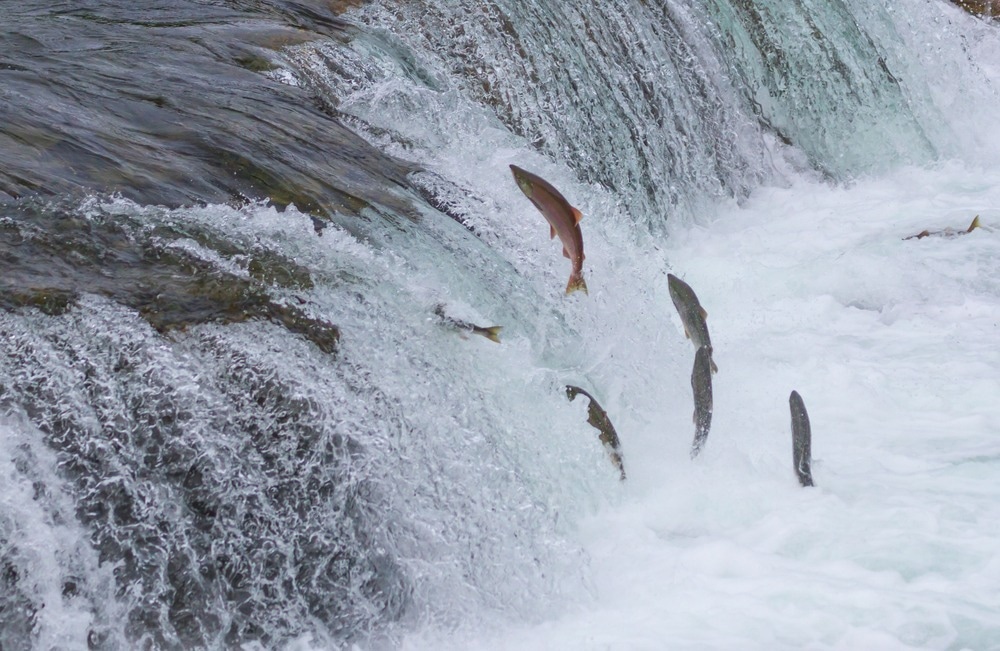A recent study published in Water demonstrates using the Archimedes screw, a mechanism originating from 234 BCE, to manage fish migration. Archimedes screw continually raises fish and water into an optical sorting system.

Study: Test of a Screw-Style Fish Lift for Introducing Migratory Fish into a Selective Fish Passage Device. Image Credit: Sekar B/Shutterstock.com
Fish passage systems that selectively allow the flow of desired species while preventing the passage of unwanted species are required. Optical sorting instruments coupled with recently developed machine learning algorithms can be used to detect invasive species from high-resolution images.
Benefits and Limitations of the Great Lake’s Restoration Action Plans
To re-establish the connection between fish in the Great Lakes and their tributaries, barriers must be removed or bypass passage strategies must be developed. This action plan includes preventing the spread of exotic species. The enhanced passage of migratory species is one of the advantages of eliminating barriers.
Removing barriers can facilitate the entrance of invasive species, viruses, and even toxins into protected watersheds. The connection dilemma is caused by the contradictory management activities around the barriers. Sea lamprey management in the Great Lakes is one example of an invasive species whose control depends on migratory barriers.
Why Fish Passage Technologies?
Barriers are an efficient method for regulating invasive species, such as the marine lamprey in the Great Lakes, but they are undesirable as they restrict the passage of native, desirable species.
Barriers are significant obstacles to rebuilding the habitat and migration routes of fish. Fish passage techniques that selectively permit the passage of desired species while preventing the passage of undesired species are required to solve the connection dilemma around the barriers.
Manual Trap-and-Sort Method
The manual trap-and-sort method is the only established way to pass and restrict fishes specifically. While efficient in preventing the passage of unwanted fishes, such as the sea lamprey, the amount of desirable fish that can pass through the manual trap-and-sort procedure varies greatly.
The Manual trap-and-sort technique is time-consuming and can be hazardous to fish health. Therefore, it is necessary to create automated sorting techniques that reduce human participation and fish handling.
Potential of Optical Sorting in Fish Migration Management
An optical scanner dataset of images of Great Lakes fishes was used to construct a deep neural network. Individual fish species were recognized with 95% precision, and the sea lamprey was distinguished from other species with >99% precision.
The sorting of fish focused on species-level recognition with an optical scanner has not yet been executed. However, the same techniques are frequently used to measure the size of the fish, which controls the operation of the sorting spillway doors, directing the fish to the appropriate-sized transport tubes.
Therefore, a step toward sorting by species using an optical scanner is feasible. The scanner needs the fish to be lifted from the water and transported on a wetted ramp to obtain reliable and high-resolution images. Archimedean screws can be used for fish transport required for optical sorting.
Archimedean Screws for Fish Transport
Archimedean screws, initially designed to transport water, can transport fish into an optical sorter. They pump water using helical blades (i.e. turbines). Other hydraulic fish lifts can raise fish from the water but delay or impede fish passage. Archimedes screw turbines are safer than traditional turbines for fish passages.
Development of Archimedes Screw Fish Lift (ASFL)
Zielinski et al. developed a field-scale Archimedes screw fish lift (ASFL) and installed it in a sea lamprey congestion structure in a Great Lakes channel that is periodically flooded with high numbers of native migrating fish and invasive sea lamprey. This pilot research assesses the hydrodynamic conditions at the downstream entry of an ASFL and examines their association with fish capture and eventual transfer. The researchers predicted that the hydraulic parameters at an ASFL's downstream entry affect fish capture.
Research Findings
Examining the capture and transfer of fishes using a working model of the Archimedes Screw Fish Lift (ASFL) revealed that a combination of migrating Great Lakes fish could be carried effectively without any apparent mortality or damage.
Overall, the results of this pilot research show that the ASFL can collect and transport migratory fish from the Great Lakes through modest vertical discrepancy into an optical sorting and fish passage tool.
This pilot-level research contributes to the knowledge of the potential applications of the ASFL in upstream passage situations, a promising but understudied area of this technology.
The research shows that an ASFL with additional attraction flow could be a feasible option to capture and transfer fish into an optical sorting device that necessitates fish being out of the water for inspection and image recognition. However, more extensive testing is still necessary.
Reference
Zielinski, D. P., Miehls, S., & Lewandoski, S. (2022). Test of a Screw-Style Fish Lift for Introducing Migratory Fish into a Selective Fish Passage Device. Water, 14(15), 2298. https://www.mdpi.com/2073-4441/14/15/2298
Disclaimer: The views expressed here are those of the author expressed in their private capacity and do not necessarily represent the views of AZoM.com Limited T/A AZoNetwork the owner and operator of this website. This disclaimer forms part of the Terms and conditions of use of this website.